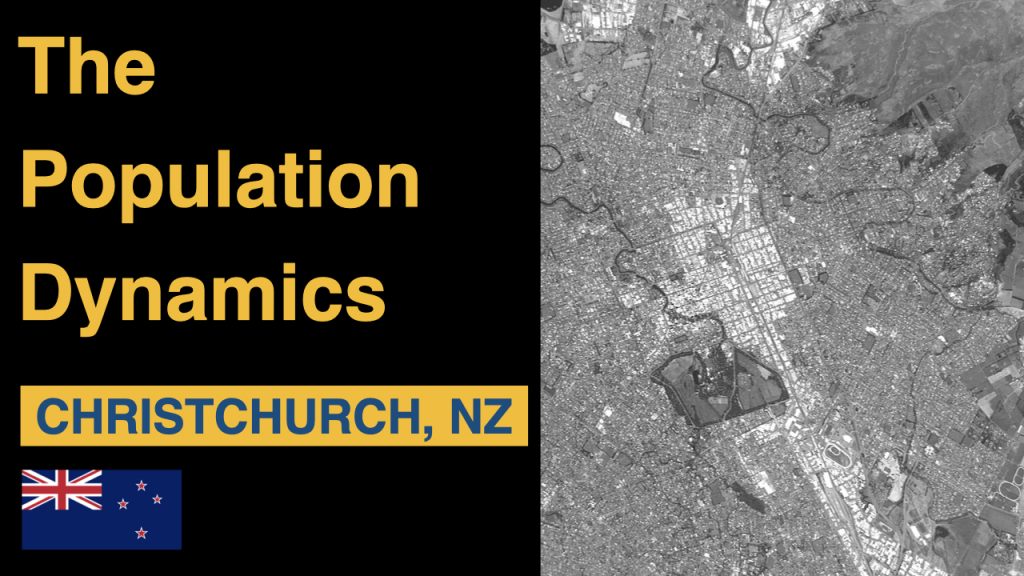
Christchurch, the largest city in New Zealand’s South Island, has experienced significant population fluctuations over the years. These changes reflect a combination of natural growth, migration patterns, and the impact of unforeseen events. This article delves into the historical and recent population trends of Christchurch, highlighting the key moments of growth and decline.
Early Growth and Development
The foundation of Christchurch in the mid-19th century marked the beginning of its population growth. Established by English settlers in 1850, the city quickly became a focal point for commerce, culture, and education. By the early 20th century, Christchurch had firmly established itself as one of New Zealand’s major urban centers, with a steadily growing population fueled by both natural increase and immigration.
Post-World War II Boom in Christchurch
Following World War II, Christchurch, like many cities worldwide, experienced a population boom. The post-war era brought economic prosperity, leading to increased birth rates and a wave of immigration. By the 1970s, the city’s population had surged, reflecting the broader global trend of urbanization. This period of growth saw the expansion of suburbs, development of infrastructure, and an influx of international migrants, particularly from Europe.
The 2011 Earthquake and Its Aftermath
One of the most significant events to impact Christchurch’s population was the devastating earthquake on February 22, 2011. This 6.3 magnitude earthquake caused widespread destruction, resulting in significant loss of life and extensive damage to infrastructure. The immediate aftermath saw a substantial population decline as residents relocated due to destroyed homes and disrupted livelihoods. Thousands of people moved to other parts of New Zealand or overseas, seeking stability and safety.
The population of Christchurch dropped sharply in the years following the earthquake. Estimates suggest that the city lost around 10,000 residents in the immediate aftermath. This decline was particularly pronounced in the city center and eastern suburbs, where the damage was most severe. The rebuilding process was slow, further hampered by aftershocks and the logistical challenges of reconstruction.
Recovery and Resurgence
Despite the significant population decline post-2011, Christchurch has demonstrated remarkable resilience. The city’s recovery has been driven by extensive rebuilding efforts, investment in infrastructure, and a strong sense of community spirit. By the mid-2010s, population trends began to reverse as the reconstruction of homes, businesses, and public facilities attracted former residents back and drew new migrants to the city.
The government’s focus on urban renewal and modernization has played a crucial role in this resurgence. Initiatives like the development of the Re:START Mall, the regeneration of the central business district, and the creation of new residential areas have been pivotal. Additionally, Christchurch’s role as a hub for innovation and education has attracted students, professionals, and entrepreneurs from across New Zealand and beyond.
Recent Trends and Future Outlook
In recent years, Christchurch’s population growth has stabilized, reflecting a balanced mix of natural increase and net migration. According to the latest estimates, the city is home to approximately 380,000 residents. The population composition has also become more diverse, with increasing numbers of migrants from Asia, the Pacific Islands, and other regions contributing to the city’s cultural tapestry.
Looking ahead, Christchurch’s population is projected to continue growing, albeit at a moderate pace. Factors such as economic opportunities, quality of life, and the city’s ongoing development projects will influence this growth. The city’s strategic planning includes enhancing resilience to natural disasters, improving infrastructure, and fostering a vibrant urban environment, all aimed at accommodating future population increases.
Conclusion
The population dynamics of Christchurch reflect a city that has navigated significant challenges and emerged stronger. From the early days of steady growth to the sharp declines following the 2011 earthquake and the subsequent recovery, Christchurch’s story is one of resilience and renewal. As the city continues to evolve, its population trends will be shaped by a blend of historical legacies and future aspirations, ensuring that Christchurch remains a dynamic and vibrant place to live.